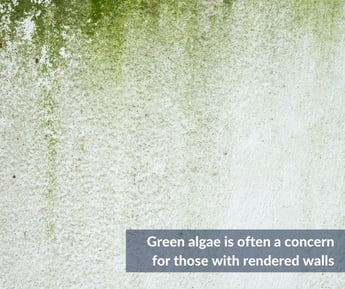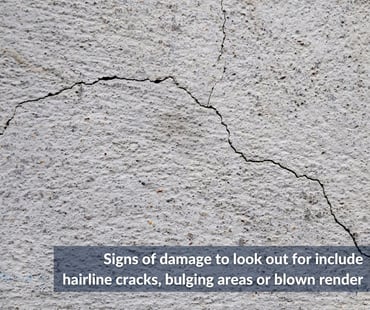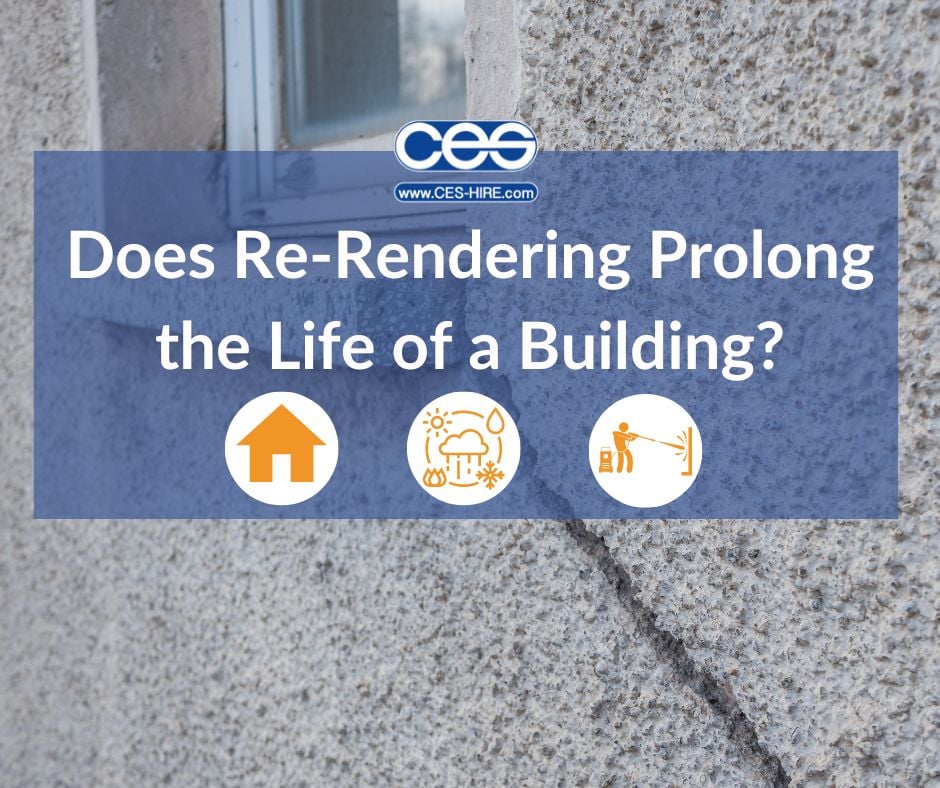Rendering your home has a huge number of benefits including the visually pleasing advantages for the budding Grand Designers amongst us. As well as more practical benefits such as protection from harsh weather conditions and making a home more energy efficient. As with most areas of a home whether paintwork, kitchens, bathrooms or carpeting, rendering also has a lifespan and at some point may need some attention or restoration work. Find out if re-rendering really is the key to a home that stands the test of time.
The Benefits of Rendering
Rendering has many benefits both whether you’re looking at it from the perspective of a homeowner or as a builder deciding on how to finish a project. The advantages include:
- One of the simplest ways to give your home a complete transformation and with monocouche available in a range of colours there really is a style to suit all
- The wow factor of render really can increase the value of your property
- There is a variety of finishes to suit all tastes from a contemporary scraped finish to a more characteristic roughcast or pebbledash finish
- Render can hide the less desirable features of a property or ‘ugly’ brickwork
- It gives fantastic weather protection particularly in exposed or coastal areas
- It can be a cheaper and quicker method of building if you build in blockwork followed by applying render through a render spray machine
- Render provides insulation for a home regulating the temperature and making it more energy efficient therefore reducing those costly energy bills.
- It will generally reduce long-term maintenance costs
- Read more on the benefits here >
How long does the render last?
There is no one-size-fits-all response to this question as various renders can perform differently and it can also depend on the structure of the house. BBA certified render will often give a lifespan of 25 years minimum but we’ve seen render lasting between 20-50 years.
The longevity of your render can also depend on the climate; if you are in an exposed or particularly damp area the render will take more of a battering. Find out more about how weather effects render here >. In harsh weather climates, lime or silicone based render will perform better. Modern render systems such as acrylic or silicone-based render have a longer lifespan as they are more flexible and permeable and often are designed with technology to repel water and algae . Cement render (more traditional render) can be susceptible to cracking or breaking off and can experience shrinkage. However traditional render is also pretty easy to repair though will require subsequently repainting unlike through-coloured monocouche renders. If you notice a crack, it is worth acting on it straight away since cracks can open up your property to water damage and cause further problems. You may notice cracks appear after 10 years with cement render however this can also vary according to the application. Always ensure rendering is carried out by an experienced contractor who will prepare the wall correctly and therefore leave it less liable to peeling and cracking. Cement render should be avoided with a timber framed house since they will move more than brick or blockwork so require a flexible render system.
Pebbledash is a particularly hardy type of render and you may stumble across pebbledash properties that are over one hundred years old due to the resilience of this render making it durable and resistant to damage.
How to maintain my render?
Ideally you don’t want to get to the point where you will need to re-render your entire property so maintenance is key. Maintaining your property will pay-off in the long run making it both easier to sell if you come to that stage as well ensuring optimum protection for the walls and structure of your house.

Vegetation growth such as green algae, moss, vines and fungi are often a concern for those with rendered properties. Some renders have now been developed with fungicide and herbicide within their formulas to prevent these unwanted growths. Often these problems will occur more in damp areas, with homes that are north-facing with less direct sunlight or houses with surrounding trees/woodland. Not only is the growth somewhat unsightly but it also encourages further damp which can lead to deterioration in your render. In order to keep on top of your render maintenance, give your property a light jet-wash every now and again (perhaps on an annual basis). A little clean will prevent the build up of algae and mould. You should begin by removing any greenery using a brush before cleaning with a render cleaner such as Weber’s CL150. If you are simply removing stains and looking to freshen up your render you can use a pressure washer and a mild detergent although be aware not to use pressure washers for dry-dash finishes. Always set your pressure washer to the fan setting and not the jet wash which could cause damage. Also do not get too close to the wall with your jetwash as you do not want to penetrate the surface.
There are products that have been designed to add an additional layer of protection to your render particularly if you’re living in an area with a harsher climate. Weber’s Weberend Protect is a highly water repellent product which can be applied by spray, brush or roller. It adds that additional layer of protection and maintains the quality of your render.
Installation of an overhang can help render last longer. An overhang is often an extension of the roof which prevents rainwater running down the render and water entering through gaps. The overhang directs water away from the rendered walls though, in rather wet climates like the UK, can never protect the surface entirely.
Of course maintenance also means acting swiftly on any cracks that may appear. The longer damage is left the worse the problem can become as water is able to seep in which can wreak havoc. Find out more about cracks and render repairs below.
Repairing Render
 You should quickly act on signs of damage to prevent the situation worsen and the job becoming more costly and time-consuming. Signs of damage to look out for include:
You should quickly act on signs of damage to prevent the situation worsen and the job becoming more costly and time-consuming. Signs of damage to look out for include:
- Cracks (large or hairline)
- Bulging areas
- Blown render (this means hollow render when it no longer adheres to the substrate behind)
- Render that has completely fallen off and exposed the brickwork behind.
- Remember new builds will often be susceptible to settlement cracks due to building movement
The time to be particularly vigilant with render damage is during winter as cold and frosty conditions can quickly cause further problems. When water seeps into a crack during winter it can freeze expanding the crack and even allowing in water between the wall and render. This can then cause a whole area of render to blow loose or even allow water to penetrate into the wall behind causing structural damage. Repairing hairline cracks will save you the much bigger headache of having to repair a large area of blown render. Take a look at our guidance for repairing hairline cracks or patch repairing render here >
Should I repair or re-render?
Unless the entire house has fallen into a state of disrepair and there are clear signs of an inadequate substandard previous render job that is affecting the structural integrity of your home, re-rendering the entire property is probably a last resort. If render is properly applied and maintained as guided above then it really should last decades and only really need minor repairs. However, if you are considering completely re-rendering your home, ensure you find a well-qualified contractor who will carry out the job properly. Things to watch out for include rendering over existing render. Best practice would be to remove the existing render to ensure the structural validity of the brick/blockwork beneath before starting the render process from scratch. Render over render would generally be too heavy and cause the render to fall off and even compromise the house structure beneath.. However, you will sometimes be able to apply a modern render system such as thin-coat silicone render over the existing render but always seek advice from a qualified renderer or render manufacturer.



